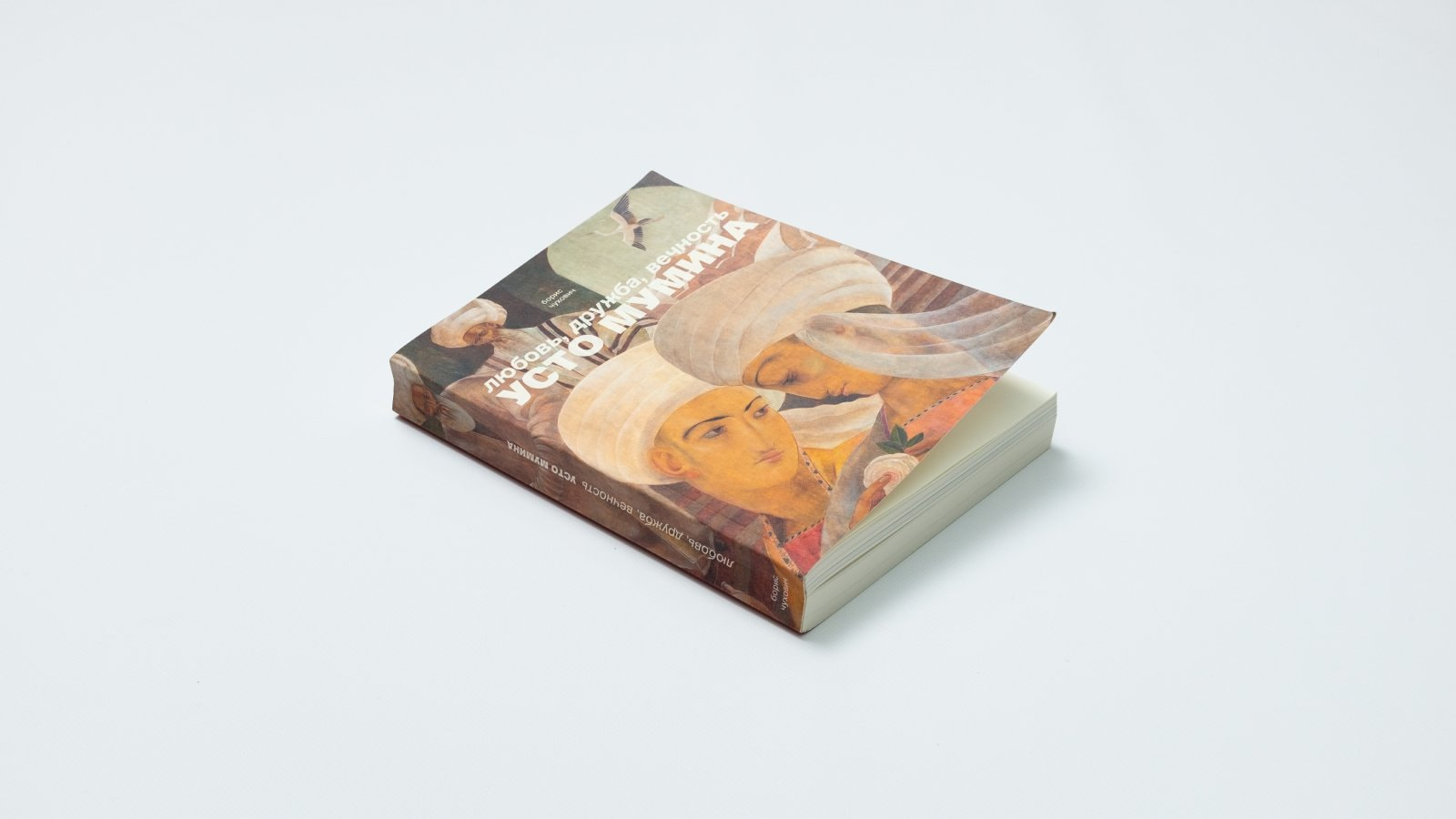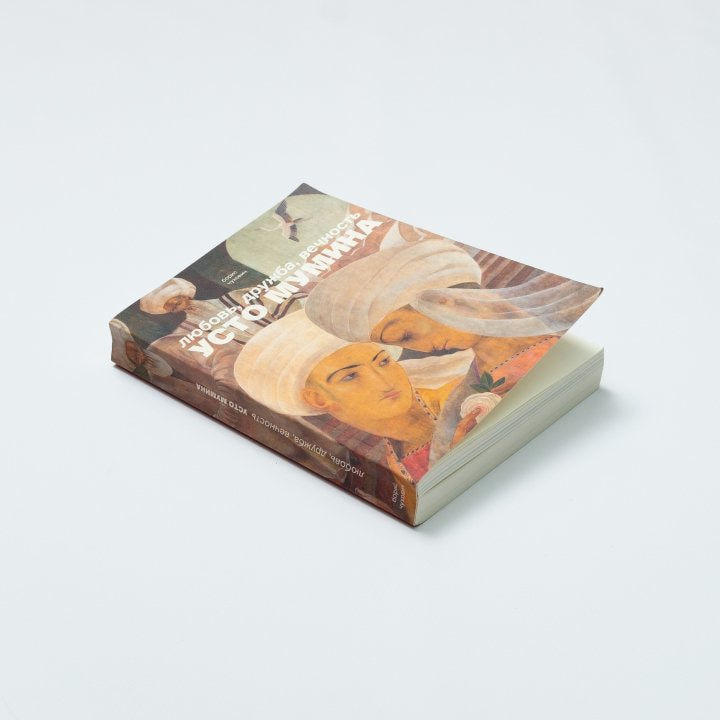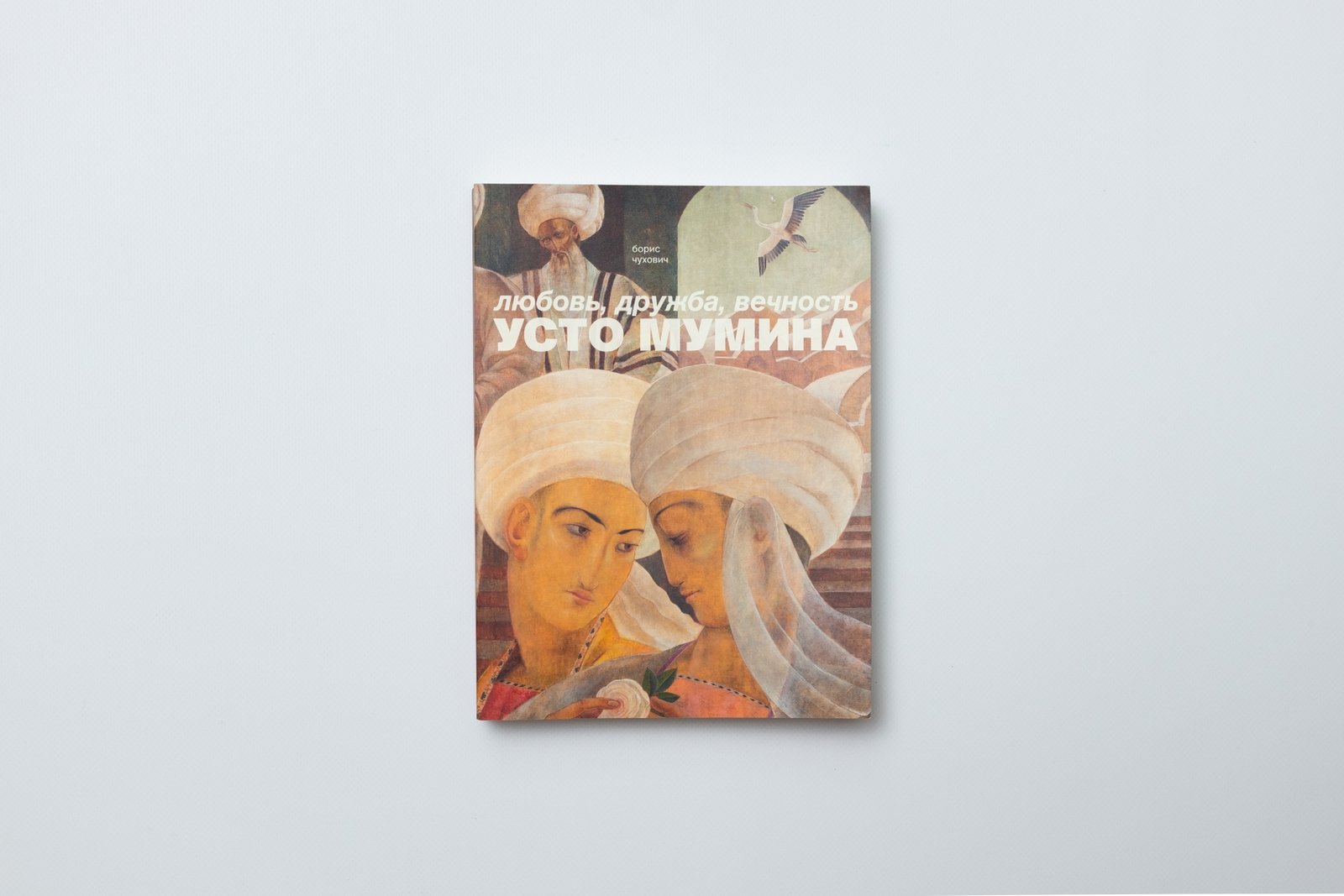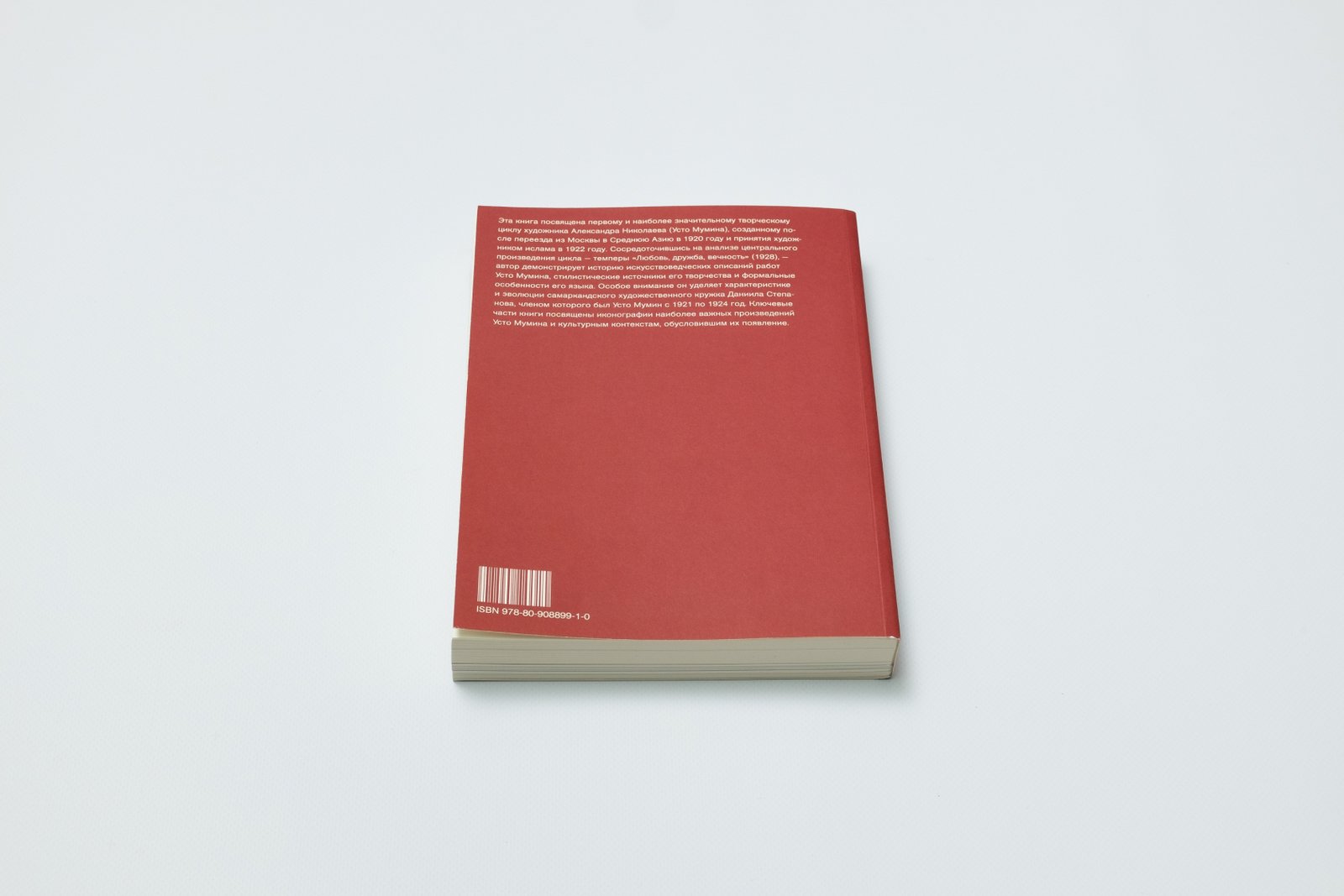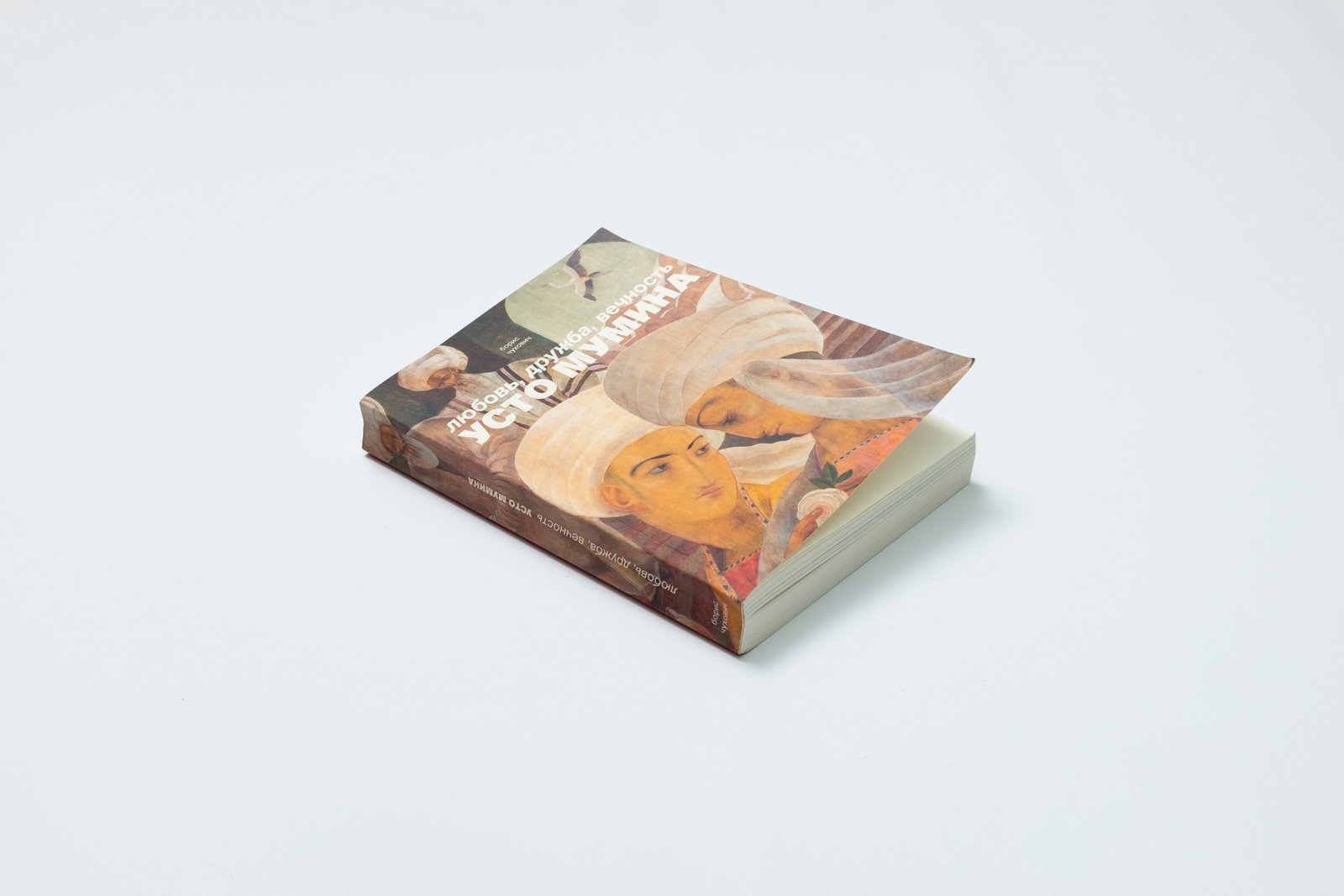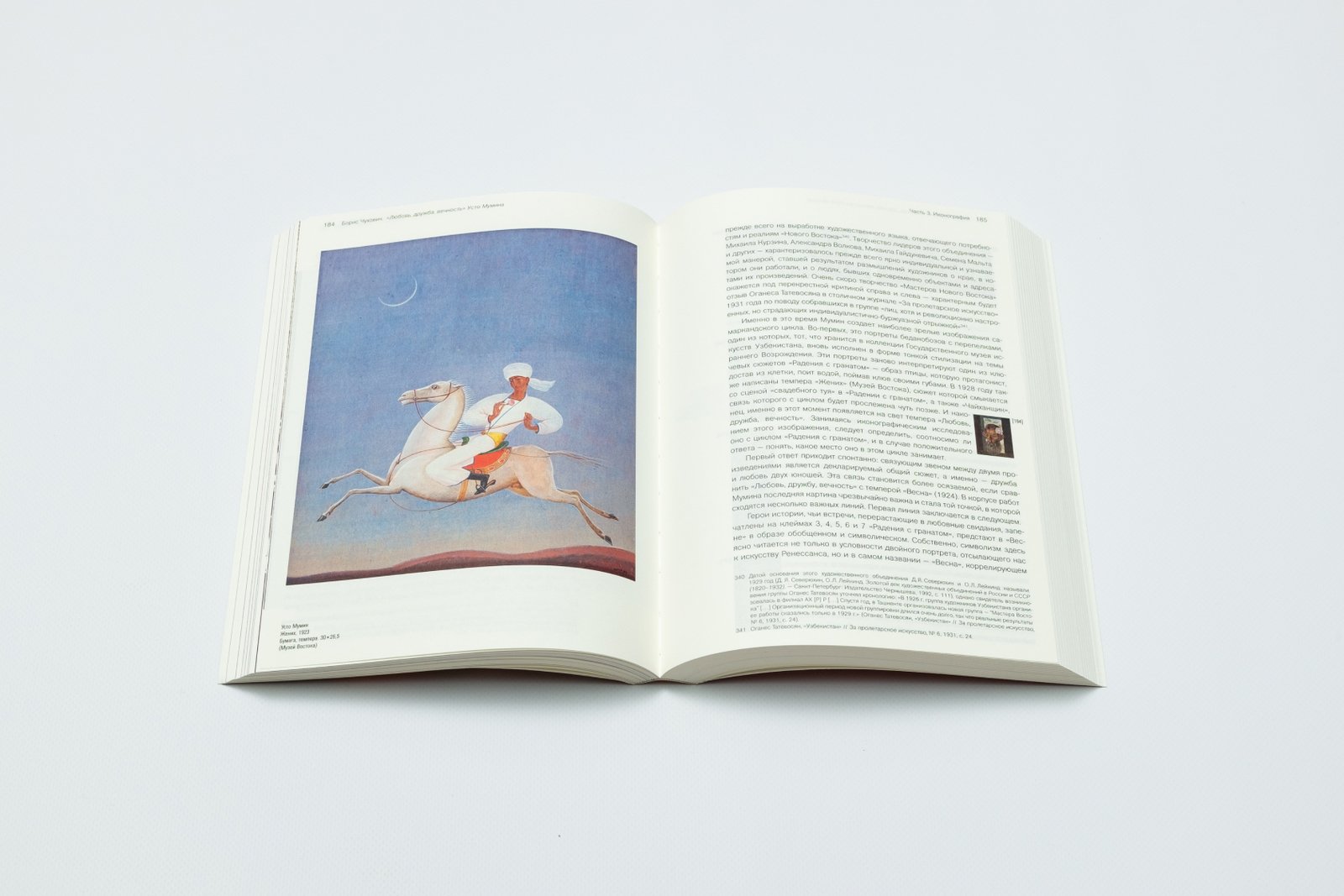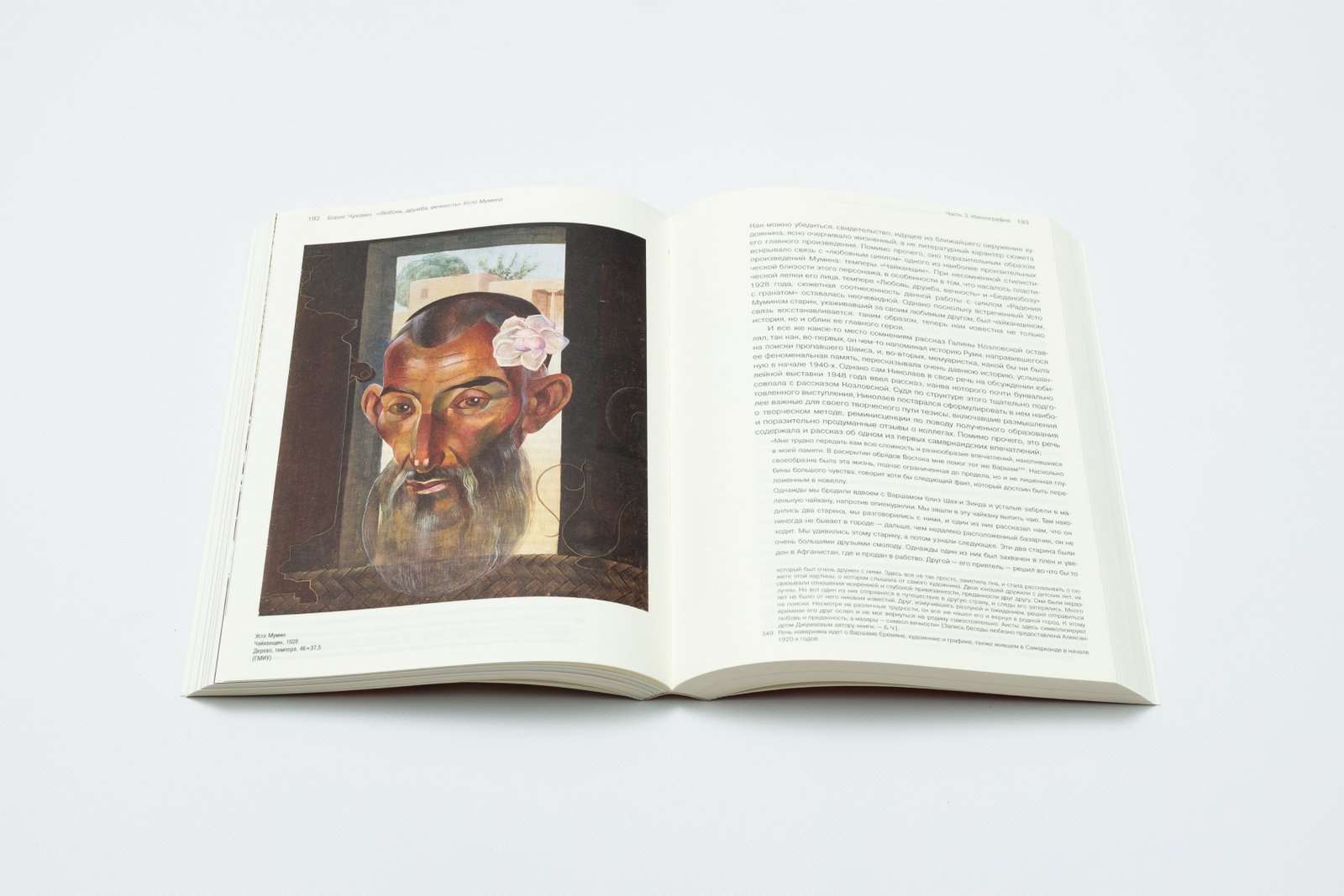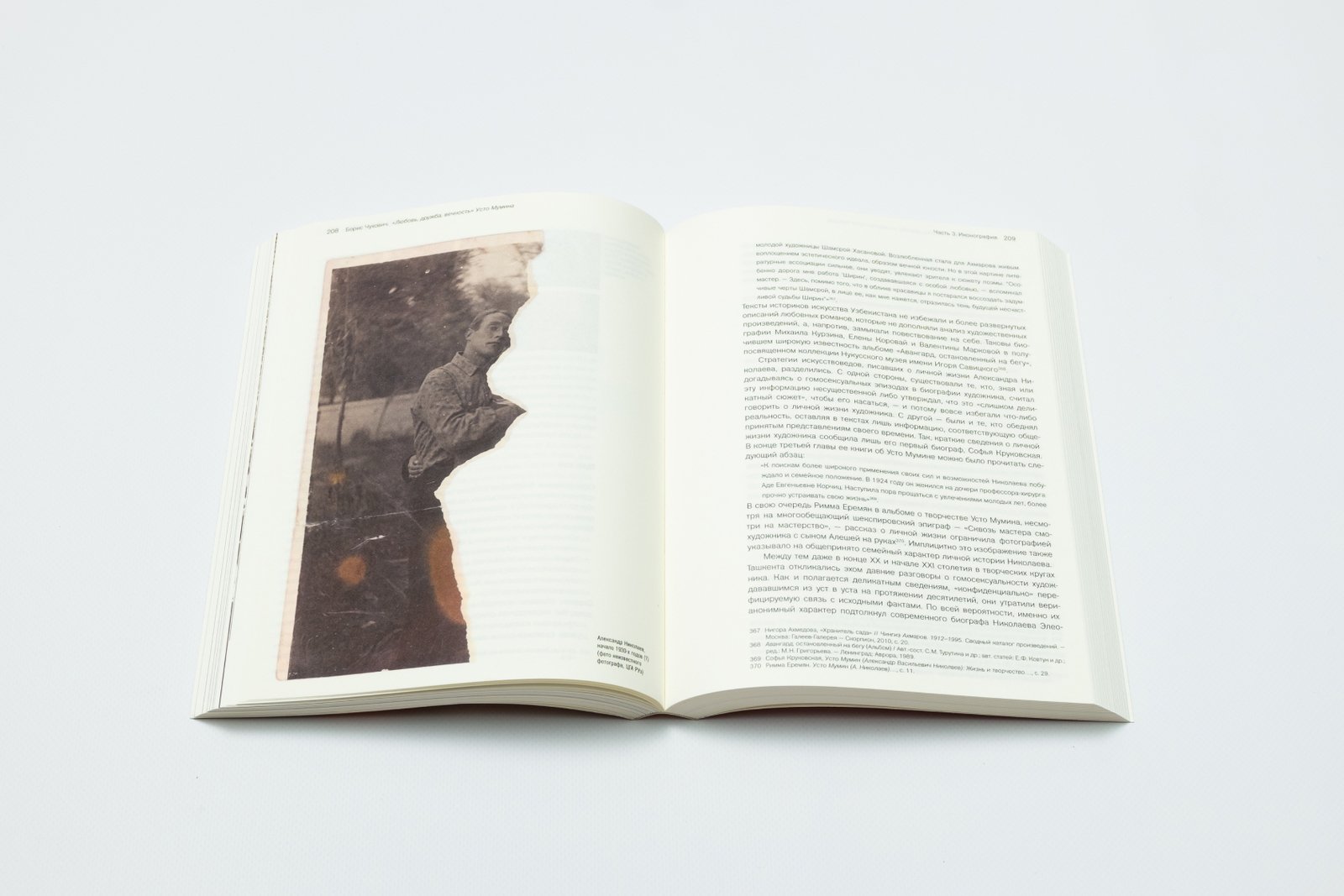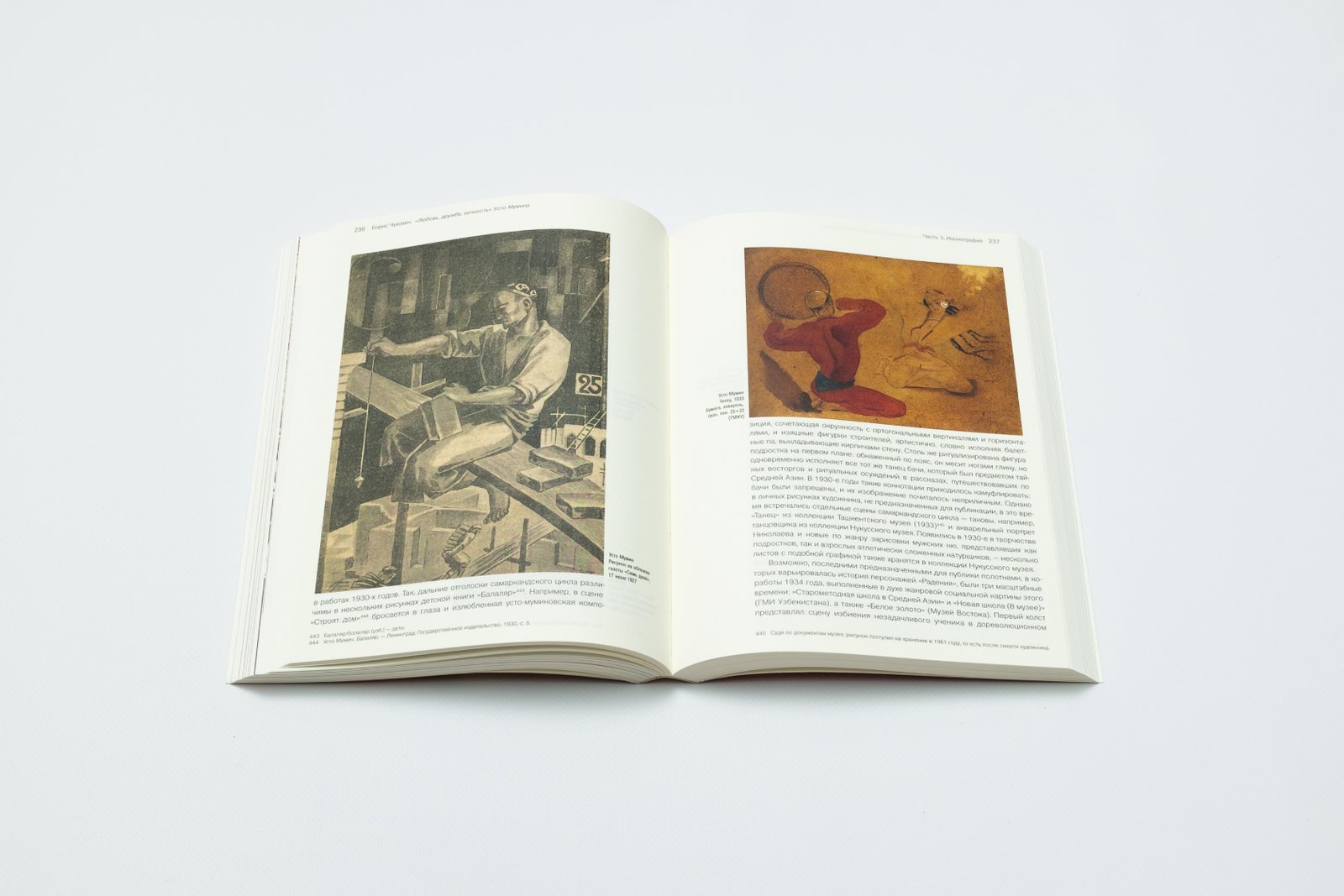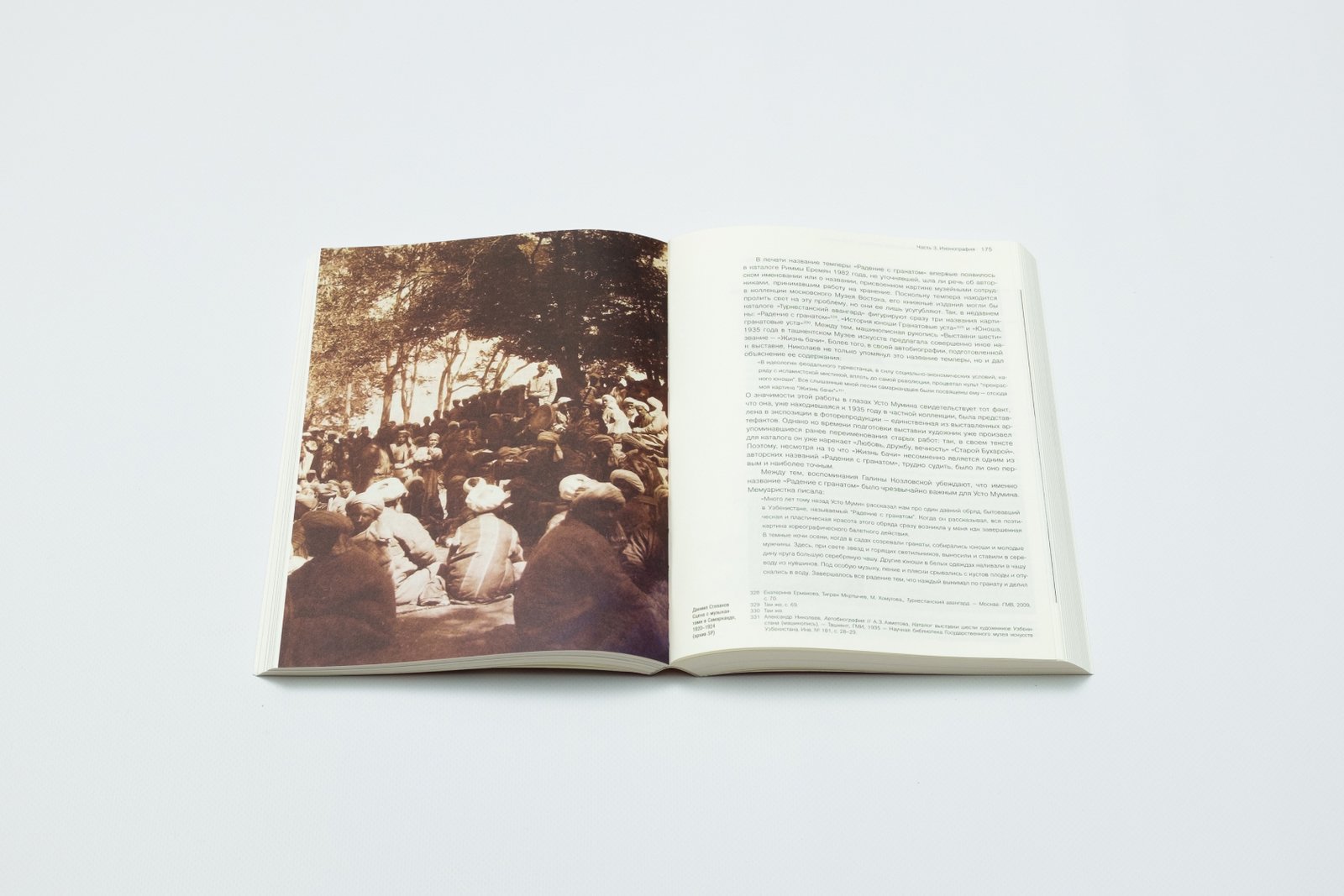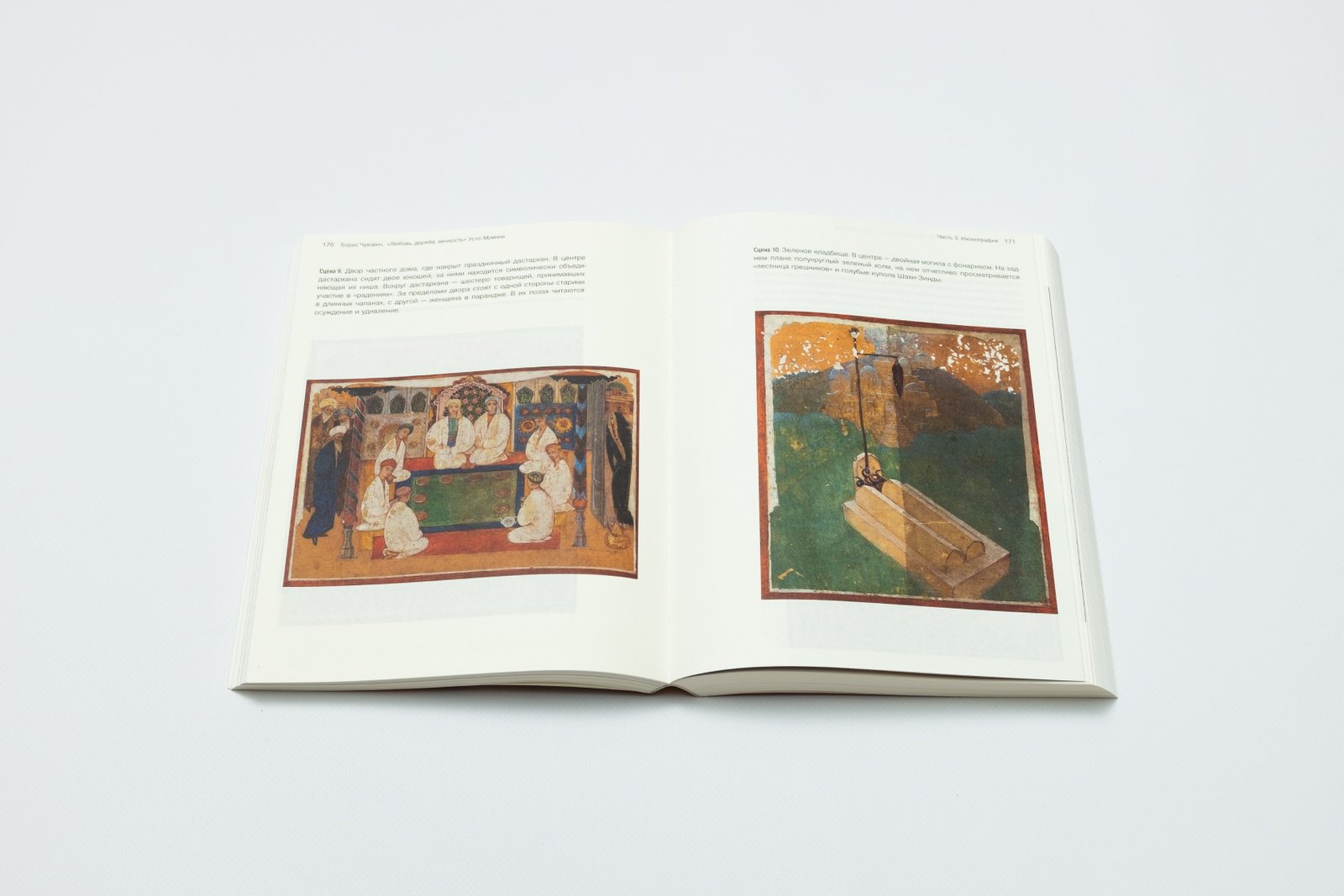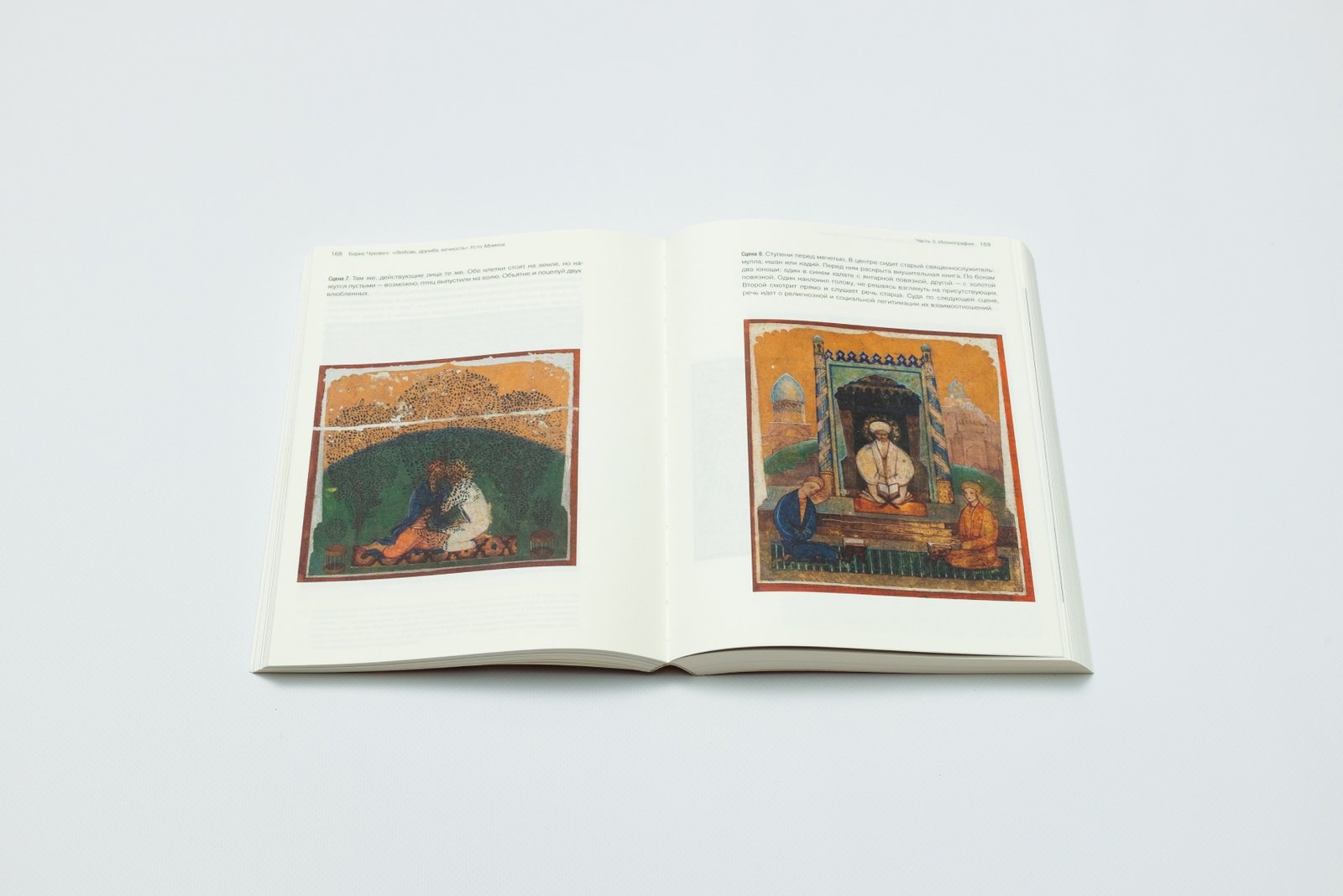Art historian Boris Chukhovich’s book explores the first and most important creative series by the artist Aleksandr Nikolayev (Usto Mumin), which was created after his move from Moscow to central Asia in 1920 and the artist’s conversion to Islam in 1922.
Focusing on the analysis of the central work in the series, Love, Friendship, Eternity (1928), the author traces the history of art historical descriptions of Usto Mumin’s works, the stylistic sources of his creativity, and formal aspects of his language. Chukhovich pays particular attention to the nature and evolution of Daniil Stepanov’s artistic circle in Samarkand, of which Usto Mumin was a member from 1921 to 1924. Other artists from this almost unknown community included Alexei Isupov, Nikolai Mamontov, and Viktor Ufimtsev, and also, for a short period, Kuzma Petrov-Vodkin and Alexander Samokhvalov.
The key parts of the book examine the iconography of Usto Mumin’s more important works and the cultural context behind them. In setting out his own opinion, the author presents a panorama of other views of the questions he raises and gives the reader the opportunity to define what determined Usto Mumin’s creative path: Islamic mysticism, various trends in the culture of the Silver Age or the first Soviet decade.
The final part of the book explores the way Usto Mumin’s first series affected the art of Uzbekistan in the twentieth and twenty-first centuries.
This unique, twenty-year research project by Boris Chukhovich presents for the first time numerous sources, eyewitness accounts, and archive documents, many of which are included in the last section of the book.
